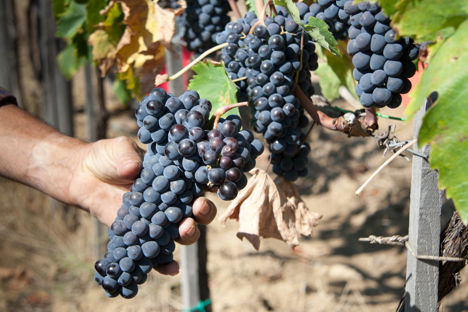
A guide to Italian wine classifications
Marco Rossi introduces us to the world of Italian wine and explains the differences between DOCG, DOC and IGT varieties.
View more from this series:
Italian wineItaly makes more wine than any other country in the world. This by itself doesn’t mean anything, but when you take into account the quality and the enormous number of small craft producers who contribute to the production, it becomes clear that Italy also makes some of the best. The country is known for its beauty and history, but the wine is just as important; Italy was one of the first countries to start producing it, even before 700 BC. Imagine a place that is home to innovative trends in the vineyard, a huge number of micro-territories which link to many different and unique terroirs and a nation with the largest heritage of grapes on the planet, and you start to get an idea how special Italian wine is.
In Italy, wine isn’t just a drink; it’s something that represents the history, society, food, geography and the evolution of the country. The vino itself is seen as a guardian of tradition; a sort of time capsule for each year and a way to tell the story of every vintage.
Wine is so important to both the people and the Italian government that it soon became the country with the largest number of classifications (DOCG, DOC and IGT). These letters are given to different wines depending on how the grapes are grown and the wine is made. They’re badges of honour for many wine producers, as it means they have followed very strict guidelines to make great wine. If you see these letters on a bottle, then it is a guarantee of both quality and that the wine’s flavour perfectly express a single territory’s characteristics.
Only Italian wines fall under these three classifications (known as appellations), but it can be hard to work out what they mean. Here’s a quick rundown of what each classification means.
Appellations
Wines in this category have been made under the highest level of restrictions. Everything from the way the grapes are transported from the vineyard to the cellar to the refinements and bottling is heavily controlled. Only a handful of wines achieve DOCG status.
Created to bring out the common characteristics of a small territory
Grapes and wine must be produced within the ‘area of origin’
The wines are subject to stringent checks via chemical and physical analysis and go through two expert tasting panels before being deemed good enough
This type of wine is usually made to be as traditional as possible
There is still a very high level of restriction for DOC wines, but the regulations aren’t quite as intense as DOCG.
Created to bring out the common characteristics of an area slightly larger than a DOCG wine
Grapes and wine must be produced within the ‘area of origin’
Wines are subject to a single control with chemical and physical analysis and only one tasting panel
You often find both red and white varieties of the same DOC
This type of wine is usually made in the territory’s traditional way
• Nearly 20 wine-producing regions (virtually all the regions in Italy)
• An average vineyard is less than 5 hectares with 2,000 vines
• Tuscany, Piedmont and Veneto are among the most famous producing regions
• 330 DOC and 74 DOCG varieties
• 48.9 million hectoliters produced every year
IGT is a new classification that falls just under DOC. The wines are usually made in a larger production area and there’s more leeway for the producer to put their own ideas or quirks into the process. This is why IGT wines are often linked to the so-called ‘new wave’ organic, biodynamic and natural varieties being created across Italy. It’s important to remember that while it is technically classed as below DOC, some of the best Italian wine is labelled as IGT.
Grapes and wine still need to be produced within the ‘area of origin’
The wines are subject to analysis but there is not an actual tasting due to the fact that the flavour can differ from bottle to bottle
Reds, whites and rosés can all be IGT wines
